Disclosure: This post may contain affiliate links. I may earn a small commission for my endorsement, recommendation, testimonial, and/or link to any products or services from this website.
Virginia is known for its fresh Chesapeake Bay oysters, and these crispy deep fried oysters are the best way to prepare them! A simple cornmeal coating gives the shellfish a beautiful golden brown exterior and just the right amount of crunch. Serve them with a creamy dipping sauce, stuff them into a po’ boy sandwich, or just garnish with lemon wedges. They’re the ultimate Southern treat!

Table of Contents
If you love oysters as much as we do, be sure to try this Virginia oyster stew, too!
How to Fry Oysters | 1-Minute Video
Just like our blue crabs, our Brunswick Stew, and our country ham, Virginians take great pride in our fresh oysters. In fact, Virginia is considered the Oyster Capital of the East Coast, with over 40 million oysters sold each year!
We live near the mountains in Central Virginia (not on the coastline); however, those fresh, briny oysters from the Chesapeake Bay and its tributaries make a regular appearance in our neck of the woods at oyster roasts, in country markets, and on holiday tables. Southern fried oysters that are soaked in buttermilk and dredged in seasoned cornmeal are a classic way to showcase this local delicacy.

Why You’ll Love this Recipe
- Great Flavor. From salty to sweet, buttery to briny, Virginia’s oysters taste just like the waters they come from – whether it’s the Rappahannock River, the Chesapeake Bay, or the Atlantic Ocean. Virginia boasts eight oyster regions that produce eight distinctive flavors, so oyster aficionados would tell you that the taste of your fried oysters will depend on where they were harvested. For the rest of us, it’s safe to say that deep fried oysters taste salty, briny, slightly sweet, crispy on the outside, and chewy on the inside. There’s just nothing quite like them!
- Easy. You only need a handful of simple ingredients for the best fried oysters recipe — and you probably have most of them in your kitchen already. Once coated in the cornmeal dredge, the oysters only need about 2-3 minutes in the hot oil. So quick and easy!
- Versatile. Serve a tray of fried oysters as an appetizer at your next fish fry or picnic, offer them for hors d’oeuvres at a holiday party, or make them the star of the show as an entree for a delicious dinner (don’t forget the hush puppies on the side). Fancy or casual, you can enjoy this dish at any occasion.

Ingredients
This is just a quick overview of the ingredients that you’ll need for our favorite fried oysters. As always, specific measurements and complete cooking instructions are included in the printable recipe box at the bottom of the post.
- Fresh shucked oysters: Chesapeake Bay oysters from a local country market are always our preference! The pre-shucked oysters are packed in their liquor, so transfer them to a colander to drain and rinse. Pat them dry with paper towels to get the oysters as dry as possible before soaking and breading.
- Peanut oil, for frying: a neutral oil that won’t flavor your oysters, with a high smoke point. Vegetable oil or canola oil will also work!
- Buttermilk: adds a nice, subtle tang to the dish. It also helps the seasoned cornmeal adhere to the oysters, eliminating the need for a thick egg coating. If you don’t have access to a thick, rich, full-fat buttermilk (which is literally the liquid left behind after churning butter), you can make your own buttermilk by placing 1 tablespoon of white vinegar or lemon juice in a liquid measuring cup and adding enough milk to measure 1 cup. Stir, then let stand for 5 minutes. Add a dash of hot sauce to make it spicy if you like.
- Yellow cornmeal and all-purpose flour: form the classic crispy coating on the oysters. Instead of the more traditional cornmeal dredge, try using panko or regular breadcrumbs to coat the oysters.
- Kosher salt and ground black pepper: to enhance the other flavors and give the oysters a more complex flavor.
- Old Bay seasoning: this classic seafood seasoning blend is a combination of 18 herbs and spices like celery salt, paprika, red pepper, and black pepper. You can substitute with a Cajun seasoning or Creole seasoning blend for a New Orleans fried oysters recipe, or create your own seasoning blend using your favorite herbs and spices. A simple combination of garlic powder, paprika, salt, pepper, and cayenne would be great, too!

Directions
Frying oysters at home is actually really simple — but the end result tastes decadent, indulgent, and impressive! These classic fried oysters come together with about 15 minutes of prep and only require about 2 minutes to cook. They’re crispy, golden brown, and bursting with flavor.
- Soak the oysters in buttermilk for a few minutes.
- Whisk together the cornmeal and flour mixture.
- Dredge oysters in cornmeal coating. Shake off the excess buttermilk and cornmeal to make sure that you just have a light coating on each piece.
- Heat the oil to a temperature of 350 degrees F.
- Fry the oysters in batches so that you don’t overcrowd the pan. This takes about 2-3 minutes per batch. Once the oysters go into the oil, the temperature of the oil may come down slightly. Adjust the heat as necessary to keep the oil within a temperature range of 350°F to 375°F. If using a Dutch oven instead of a deep-fryer, use a deep-fry thermometer to keep an eye on the temp. If it drops too low, the oysters will absorb too much oil and have a greasy, unpleasant taste. Too high, and the coating will burn or become too dark.
- Use a spider or slotted spoon to carefully remove the oysters from the hot oil. Drain on paper towels on a cooling rack or on a paper-towel-lined plate, season with additional salt and pepper if necessary, and serve while still warm.

Serving Suggestions
Garnish a basket of classic fried oysters with lemon wedges or parsley and a dipping sauce such as tartar sauce (recipe shown here), remoulade sauce, ketchup, cocktail sauce, or honey mustard dip.
The oysters are a nice appetizer to serve when hosting a gathering, but they’re also a great dinner entrée on their own. Make a fried oyster po boy by serving them on a roll with remoulade sauce for a New Orleans-style dish. For sides, try hush puppies, traditional coleslaw, baked potato wedges, or a simple green salad dressed in pepper jelly vinaigrette.
Preparation and Storage
- Leftover fried oysters will keep in an airtight container in the refrigerator for 1-2 days. They’re best served immediately; however, and tend to lose their crispy texture as they sit.
- You can freeze the fried oysters for up to 3 months; however, the texture of the oysters will not be as good when thawed.
- To Reheat: Preheat the oven to 350°F. Place the oysters on a wire rack on top of a baking sheet. Warm in the oven just until heated through (5-10 minutes), being careful not to overcook them.

Tips for Success
- When I was a child, my dad and his friend were deep-frying oysters. The oysters exploded in the fryer, splattering hot oil all over the ceiling and walls. As a result, I always use a toothpick to poke a small hole in the large round part of each oyster before breading. This releases the liquid and any pressure that might build inside the oyster that could cause it to explode when it hits the hot oil. It’s similar to poking holes in potatoes before baking — maybe not necessary, but certainly doesn’t hurt!
- Season the oysters before frying by adding the seasoning to the cornmeal mixture. You can also season with additional salt and pepper (if necessary), as soon as the oysters come out of the oil.
- Maintain a consistent oil temperature of about 350°F (or as high as 375°F) for crispy, golden brown oysters. You may need to adjust the heat to keep the oil within this range. If you don’t have a deep-fry thermometer (or candy thermometer), that’s fine! When the oil is hot (but not smoking), add a drop of water to the pan — if it sizzles, the oil is hot enough for the oysters.
- Fry the oysters in batches so that you don’t overcrowd the pan, and gently stir or move them around, as necessary, to prevent them from sticking together.

More Southern Fried Recipes

Fried Oysters
Equipment
Ingredients
- 1 pint fresh shucked oysters (about 18 oysters total)
- Peanut oil, for frying
- 1 cup whole buttermilk, well shaken
- 1 cup cornmeal
- 1 cup all-purpose flour
- 1 tablespoon kosher salt
- 1 teaspoon Old Bay seasoning
- ½ teaspoon ground black pepper
Optional Tartar Sauce:
- 1 cup mayonnaise
- 1 tablespoon Dijon mustard
- 1 tablespoon minced fresh dill or parsley, optional
- 1 ½ tablespoons freshly-squeezed lemon juice
- Salt and pepper, to taste
Instructions
- For the Tartar Sauce: Combine all of the ingredients in a small bowl. Cover and refrigerate until ready to use.
- Heat oil in a deep fryer to 350°F, in a deep cast iron skillet, or in a Dutch oven over medium heat to a depth of about 2-3 inches, until it reaches 350°F. If you don’t have a deep-fry thermometer, sprinkle a few drops of water on the hot oil. If it sizzles, the oil is hot enough.
- Drain the oysters in a colander and pat dry with paper towels. Use a toothpick to poke a small hole in the large round part of each oyster. Put the buttermilk in a shallow dish. In a separate shallow dish, combine the cornmeal, flour, salt, Old Bay seasoning and pepper.
- Add the oysters to the buttermilk and soak for a few minutes.
- Remove the oysters from the buttermilk, gently shake off excess liquid, and dredge in cornmeal mixture to coat on all sides. Shake off excess breading and transfer to a wire rack.
- Working in batches so that you don’t overcrowd the pan, fry oysters until golden and crispy, about 2-3 minutes. Drain on paper towels, season with additional salt and pepper (if necessary) while they’re still warm, and serve hot with tartar sauce or other dipping sauce.
Video
Notes
- This recipe serves about 2-3 people as an entrée, or 4-6 people as an appetizer or snack. You can adjust the quantity of oysters and other ingredients (doubling or tripling), as necessary, to feed a larger crowd.
- When I was a child, my dad and his friend were deep-frying oysters. The oysters exploded in the fryer, splattering hot oil all over the ceiling and walls. As a result, I always use a toothpick to poke a small hole in the large round part of each oyster before breading. This releases the liquid and any pressure that might build inside the oyster that could cause it to explode when it hits the hot oil. It’s similar to poking holes in potatoes before baking — maybe not necessary, but certainly doesn’t hurt!
Nutrition
This recipe was originally published in December, 2020. It was updated in June, 2024.

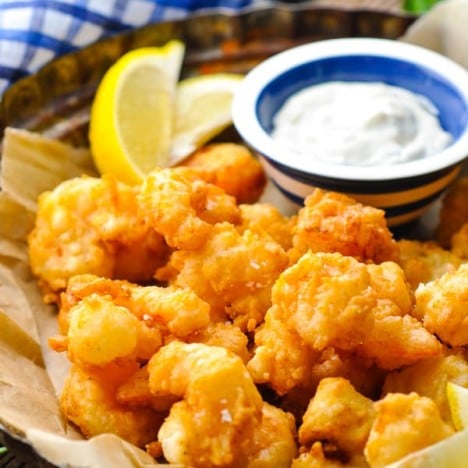
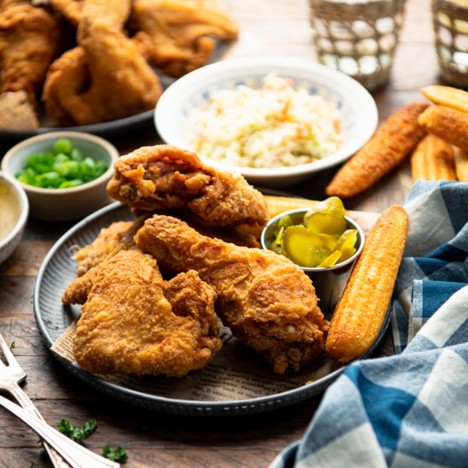





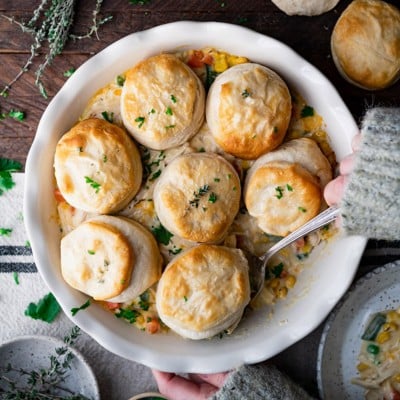
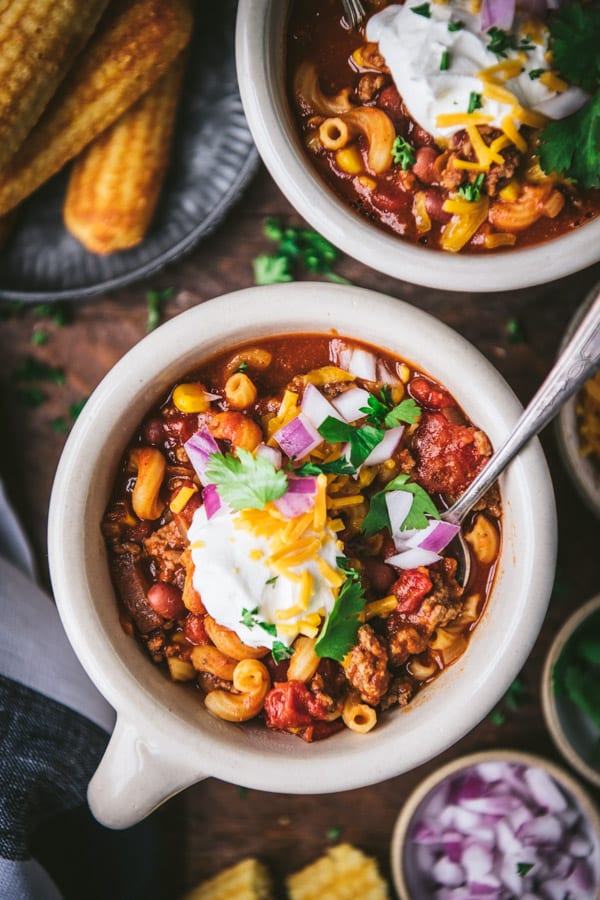
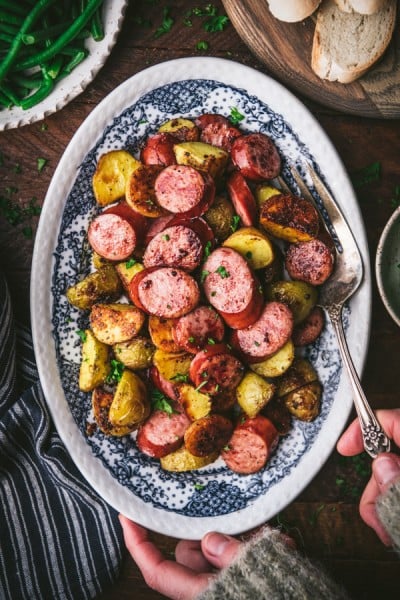












Great article. Ive been experimenting with Asian recipes, and they use corn starch instead of flour. The first time I used it, I made honey chicken. It’s really crispy without being hard. We couldn’t eat it fast enough. Thank you for sharing your recipe, they look beautiful. If you’re nervous about ruining your entire batch, try dredging just one or two in a small cornstarch mixture. Honestly, yummo.
Thanks so much, Patricia!